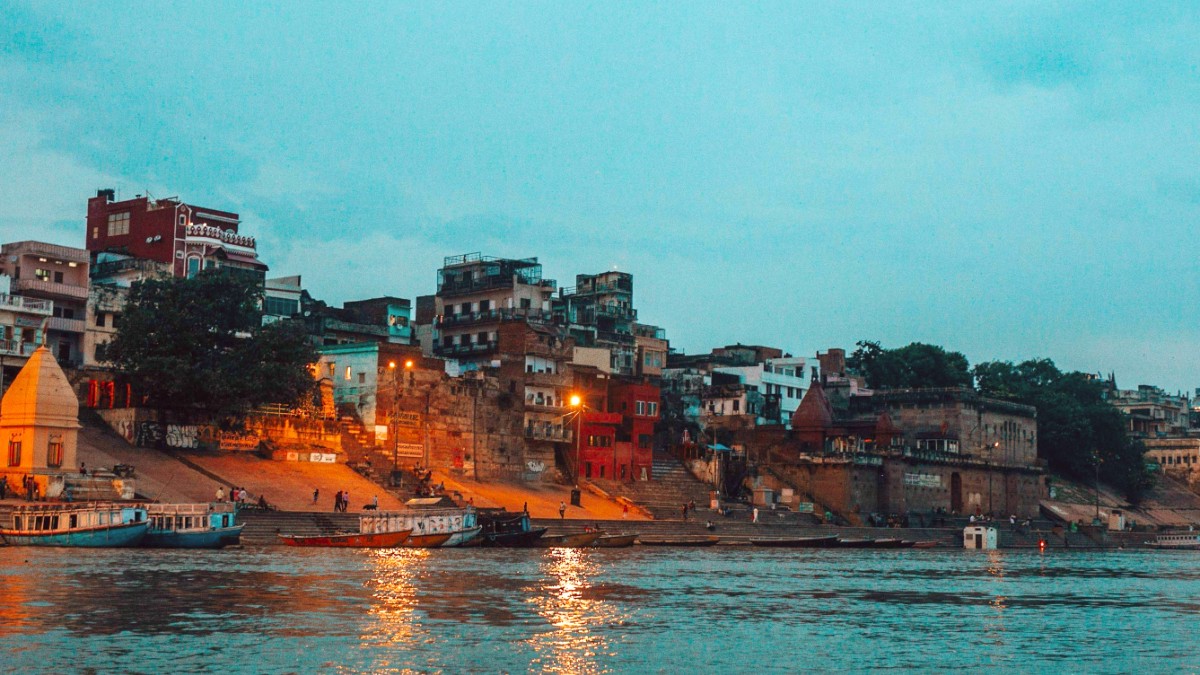
Uttar Pradesh, India
Varanasi's cuisine aligns with its spiritual ethos, featuring a strong vegetarian tradition. Historical influences from Uttar Pradesh and Bihar shape its unique character.
Expect fresh vegetables, lentils, paneer, and various grains. Common spices include cumin, coriander, turmeric, chili, and garam masala. Ghee is generously used.
Traditionally, eating with your right hand is common, especially for street food. The left hand is considered impure.
Avoid wasting food. Order what you can finish. Many restaurants are purely vegetarian.
Breakfast is often light (kachori-sabzi, jalebi). Lunch and dinner feature thalis, curries, breads, and rice. Snacks like chaat are popular throughout the day.
Deep-fried puffed bread with a spicy potato curry, a popular breakfast item.
Found at local eateries and street stalls in the morning.
Flavorful winter snack of flattened rice with green peas and ghee.
A comforting seasonal warmth.
Unique tangy and spicy chaat, mainly mashed tomatoes with spices, served with crispy toppings.
Distinct from other chaat varieties.
Aloo Tikki, Pani Puri, and Papri Chaat are must-try categories.
Thick, creamy yogurt-based lassi (Blue Lassi Shop is famous) and refreshing milk-based thandai.
Mainly found within luxury hotels (Taj Ganges, Radisson). Offer multi-cuisine options with polished service.
Numerous options offering a variety of Indian cuisines, sometimes basic Chinese or Continental.
The most authentic and inexpensive local fare is found here.
Limited options, some hotels and tourist-focused restaurants offer basic Italian (pizza, pasta) or Chinese.
Expect general international dishes, not highly specialized cuisine.
Dining here focuses on local flavors. International choices cater to broader tastes.
The focus is always on authentic Indian food.
Varanasi's cuisine is mainly vegetarian.
Many traditional dishes are naturally dairy-free.
Many dishes are naturally gluten-free.
Carry a translation card for specific needs.
Dedicated Halal or Kosher restaurants are limited.
The abundance of vegetarian options may suffice.
For Halal meat, larger, non-vegetarian restaurants might source it, but confirmation is necessary.
Always confirm with staff for specific sourcing.
Use online search engines and food blogs focusing on travel to India or Varanasi to find suitable restaurants.
Opt for simple, freshly prepared dishes where ingredients are transparent.
Local operators and guesthouses offer classes focusing on Banarasi vegetarian dishes.
Organized food walks explore the city's street food scene with a knowledgeable guide.
Some local festivals feature special traditional foods prepared and consumed during those times.
Varanasi's cuisine is deeply rooted in its spiritual identity, with vegetarian dishes being the core.
This caters to pilgrims and local beliefs.
Expect savory, spicy, and sometimes tangy flavors, with generous use of ghee.
The spices give warmth and depth to many preparations.
A delicate, frothy, cloud-like dessert available only during the winter mornings. Its ephemeral nature makes it a seasonal treat.
A refreshing, milk-based drink especially popular during the Holi festival, prepared with a paste of various nuts and spices.
Local festivals sometimes feature specific traditional foods unique to those celebratory times.
When trying street food, look for vendors with a high turnover and clear signs of hygiene. This typically indicates fresh ingredients and popular, safe choices.